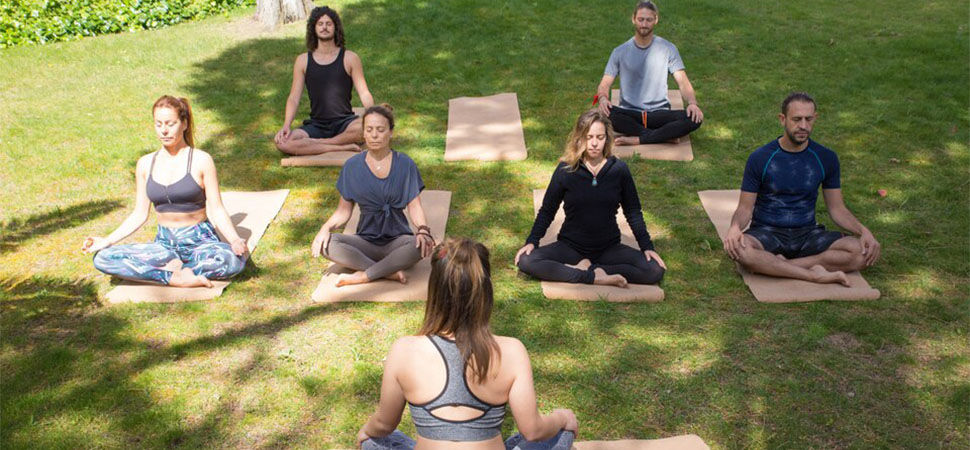Getting Started with Box Breathing

You can perform this exercise practically anywhere. However, a quiet and dimly lit room is ideal. Make sure there is nothing to distract you in the middle of the activity. Focus on your posture. Sit back straight, place your hands on your laps, close your eyes, and follow the steps ahead:
1. Prepare yourself by slowly exhaling through your mouth, getting all the oxygen out of your lungs. Slowly inhale to the count of four in your head. Make sure that your focus is completely on the air entering your body. Feel the air slowly filling your lungs;
2. Hold your breath to the slow count of four. Do not haste or clamp your nose. Remain calm and prepare to exhale;
3. Exhale through your mouth for another count of four and feel the air escaping from your abdomen and chest.
4. Hold your breath for exactly four counts before repeating the entire exercise 3 times. If you struggle to hold your breath until the count of four, try counting to three and gradually increase the time.
Benefits of Box Breathing

The box breathing technique can provide several benefits. Your ANS (Autonomic Nervous System) is either in rest and digest mode or fight-or-flight mode. During threatening or stressful situations, your body turns towards fight-or-flight mode, which makes your heart beat faster and speeds up your breathing. Being in this state for a long time is unhealthy for your body. Box breathing allows the following benefits:
-
Intentional deep breathing calms and regulates the ANS.
-
Box breathing is also known to help control involuntary body functions such as blood pressure, pulse rate, and temperature, which immediately relieves your mind.
-
Box breathing is a meditative practice that lets you manage your impulses and reactions to stressful situations.
-
Many working professionals and students deal with anxiety and stress. Long-term stress can increase the risk of a stroke and shoot up blood pressure after a certain age. Deep breathing practices help reduce cortisol levels and other hormones related to stress.
-
You can even perform box breathing to calm your nerves before bed and counter sleeping disorders like insomnia. Generally, it is a good practice to perform box breathing exercises a few times daily to keep you focused and calm.
Tips for Beginners

Getting the hang of the exercise is difficult if you haven’t practiced controlled breathing before. You might feel dizzy or find it hard to hold your breath and be calm at the same time. Concentrating on your breathing patterns without getting distracted by external noise and environment is the main aim of this exercise.
-
Begin with closer and quieter surroundings to help you focus.
-
Initially, count to three and gradually count to four, five, and six seconds later, once you’re comfortable holding your breath.
-
If you find it difficult to concentrate, focus on the air you breathe and feel it entering and leaving your body.
-
Incorporate this breathing routine into your daily life, and do not miss a day. Follow the exercise ritually, and you will eventually master it.
-
You can even find apps that help you count seconds and tell you when and how long to breathe in and out during such deep breathing practices.
Other Breathing Exercises

Most breathing exercises are classified as deep, diaphragmatic, or belly breathing. Deep breathing involves consciously engaging your diaphragm for deeper breaths by actively pulling it down with each inward breath and helping fill the lungs efficiently. There are several deep breathing exercises you can practice.
-
Alternate nostril breathing
-
Lion’s Breath
-
Pranayama
-
Pursed lip breathing
The box breathing technique is the easiest way to meditate for some time daily. It has several immediate and long-term health benefits. To make deep breathing work for you, understand and be mindful of how stress and anxiety are impacting your life and take a step towards positively overcoming them. Controlled breathing helps relieve stress and restore your focus when you feel down. You can declutter your mind and feel energized.
With only four convenient steps, anyone can practice the box breathing exercise from the comfort of their chair. You do not need fancy equipment or a professional to assist you. It is a great way to spend time with oneself and eliminate negative thoughts while inculcating good health practices.









.jpg?updatedAt=1735200955338)
.jpg?updatedAt=1735197007532)